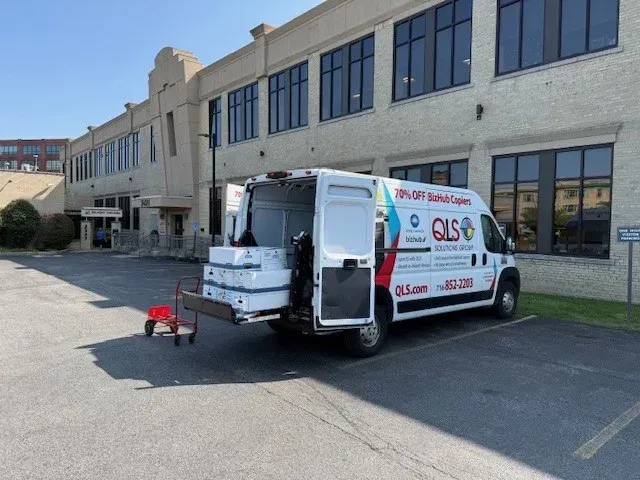
OCR Scanning Explained: Uses, Benefits, and How It Works
Optical Character Recognition (OCR) is a powerful technology that converts physical documents—such as scanned pages, PDFs, or photos of text—into searchable, editable digital data. By transforming printed text into machine-readable information, OCR makes it possible to edit, store, analyze, and integrate documents into digital workflows. This technology plays a vital role in modern data management and supports the broader shift toward digital transformation.
How OCR Scanning Works
OCR scanning converts images of text into digital characters through a multi-step process designed to ensure accuracy and consistency.
1. Image Preprocessing
To improve recognition accuracy, the document image undergoes several enhancements:
Image cleaning to remove noise or imperfections
Normalization to adjust brightness, contrast, and clarity
Deskewing to straighten tilted images
Binarization to convert the image into black and white for better text separation
2. Text Detection and Segmentation
The OCR software identifies areas of the image that contain text and breaks them into manageable pieces:
Layout analysis detects blocks of text, tables, and images
Line segmentation divides paragraphs into text lines
Word segmentation isolates individual words
3. Character Recognition
The core of OCR involves identifying characters using two methods:
Pattern recognition compares shapes to known character templates
Feature extraction analyzes strokes, curves, and edges to distinguish characters
4. Post-Processing
After recognition, the system refines and formats the text:
Spell-checking and contextual analysis correct errors
Layout reconstruction maintains the original formatting
Exporting produces editable files such as Word documents, PDFs, or plain text formats
Advanced OCR Technologies
Modern OCR tools incorporate advanced technologies to boost accuracy and expand capabilities, including:
Machine learning, which improves recognition through continuous learning
Natural language processing (NLP), which helps the system understand context and specialized terminology
Common Challenges in OCR
Despite its advancements, OCR scanning still encounters obstacles:
Handwriting variation that complicates recognition
Complex layouts that require advanced segmentation
Decorative or uncommon fonts that reduce accuracy
Types of OCR Systems
OCR technology has evolved into several specialized categories:
Basic OCR for standard printed characters
Intelligent Character Recognition (ICR) for handwriting interpretation
Optical Mark Recognition (OMR) for forms and surveys
Intelligent Word Recognition (IWR) for capturing full handwritten words
Magnetic Ink Character Recognition (MICR) for bank checks
Mobile OCR for smartphone-based scanning
Multilingual OCR for global document processing
3D OCR for reading text on curved or uneven surfaces
How OCR Streamlines Business Processes
OCR automation significantly improves operational efficiency by:
Reducing manual data entry
Eliminating transcription errors
Accelerating document search and retrieval
Minimizing physical storage costs
Supporting remote workers and digital collaboration
Improving decision-making through better data accuracy
Enhancing compliance by digitizing records for audits and regulation
OCR also transforms paper-based data into structured digital information that can be analyzed for trends, forecasting, or business intelligence.
Key Benefits of OCR Technology
Businesses and organizations adopt OCR scanning for several measurable advantages:
Faster processing and improved efficiency
Greater accuracy with fewer human errors
Operational cost savings
Stronger data security through encrypted digital files
Reduced paper usage and improved sustainability
Easier compliance with regulatory requirements
More effective data analysis for strategic insights
Less physical storage and a more organized workspace
Faster customer service and response times
Real-World Applications of OCR Scanning
OCR scanning is used across nearly every industry because it streamlines workflows and improves access to information. Common applications include:
Digitizing archived documents and historical records
Automating form, invoice, and receipt processing
Processing financial documents in banking and accounting
Scanning legal documents, contracts, and case files
Managing medical records, prescriptions, and patient histories
Supporting retail inventory, order processing, and billing
Digitizing textbooks and research materials in education
Processing shipping labels and freight documents in logistics
Powering accessibility tools such as text-to-speech or Braille conversion
Enabling document translation using digital text extraction
Supporting mobile apps for business card scanning, translation, and augmented reality
OCR Use Cases Across Industries
OCR’s versatility makes it a valuable tool for a wide range of industries:
Office automation for digitizing daily paperwork
Banking for cheque scanning and form processing
Legal firms for document indexing and retrieval
Healthcare for electronic medical record management
Retail for customer data processing and inventory control
Government for digitizing public records and applications
Education for digital course materials and research archives
Accessibility technologies for visually impaired users
Border security for passport and ID verification
Traffic systems for license plate recognition
Translation services for converting printed text into other languages
OCR scanning has evolved into an essential component of modern data management. Whether used for automation, accessibility, compliance, or digital organization, OCR enables businesses and institutions to work faster, smarter, and more efficiently. As technology continues to advance, OCR will remain a core driver of digital transformation across industries worldwide.
